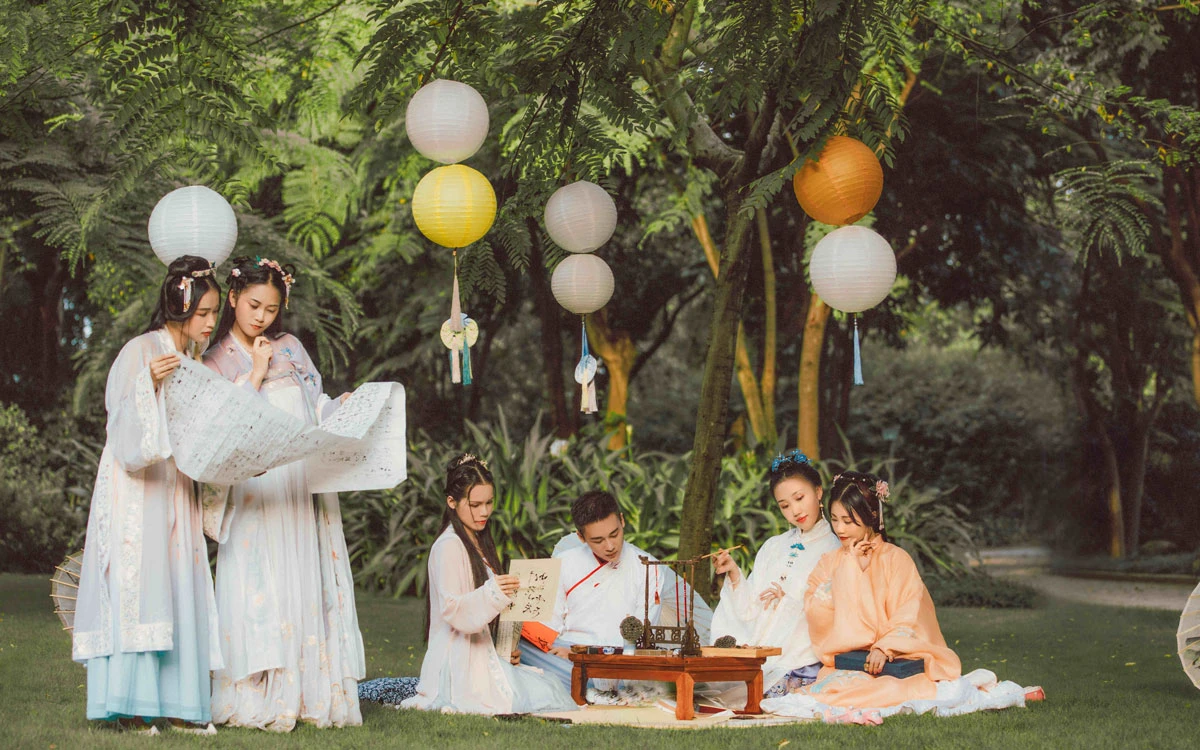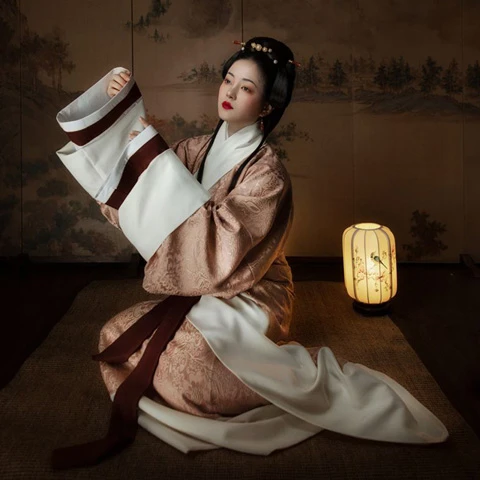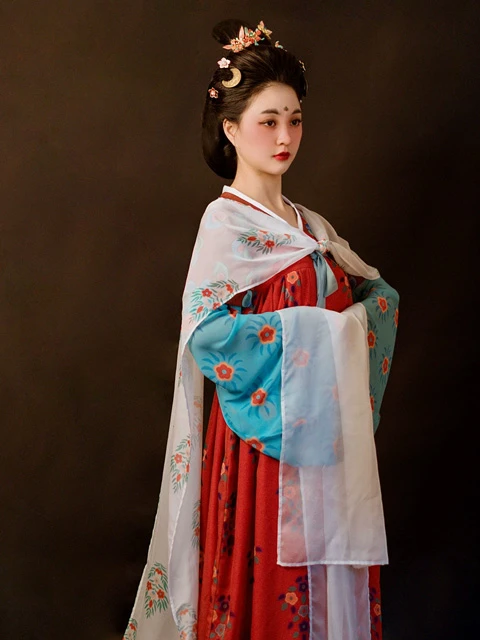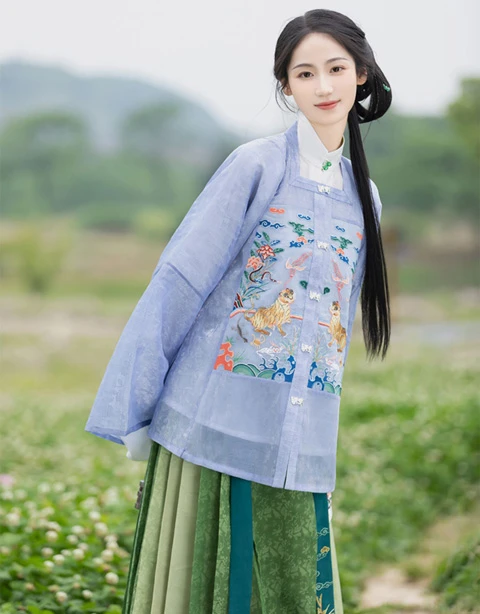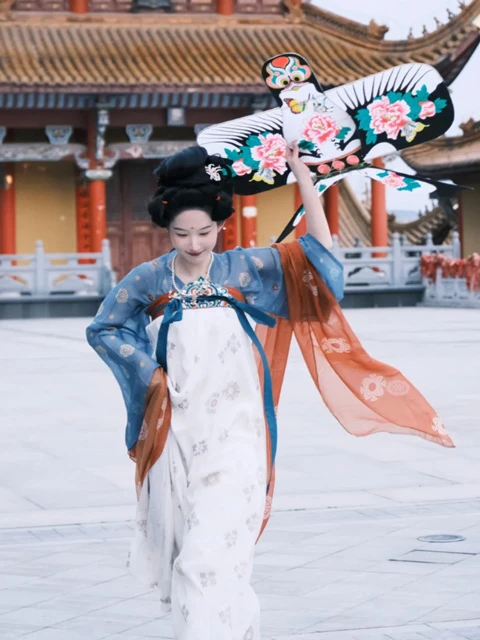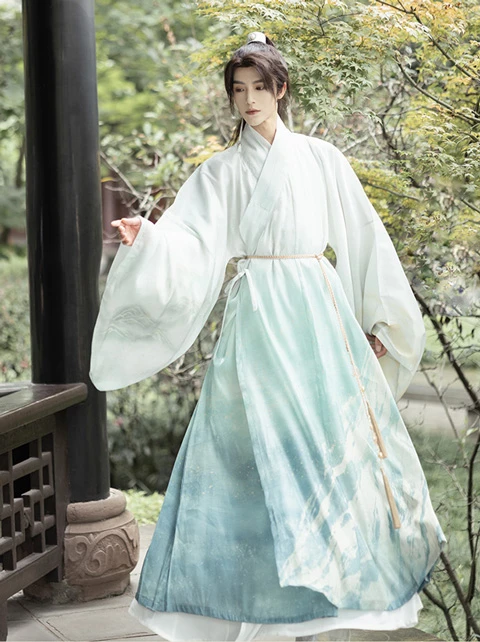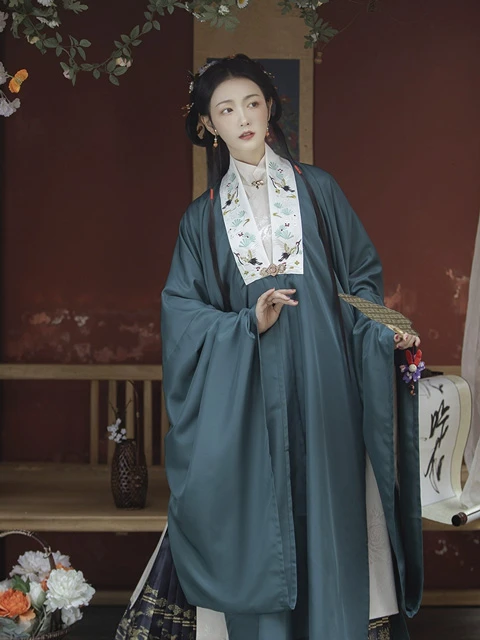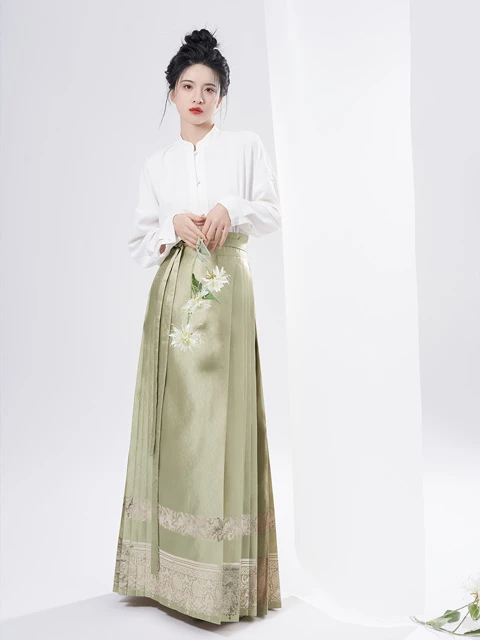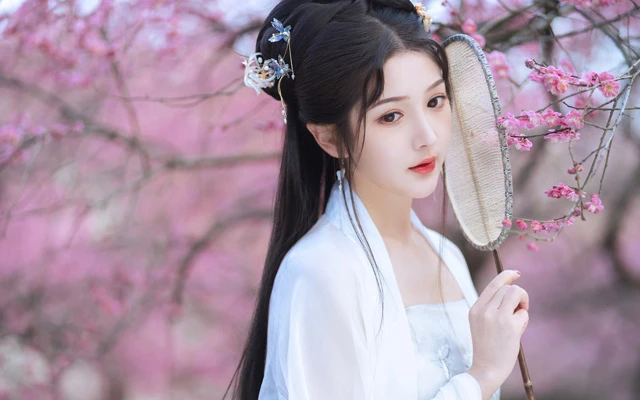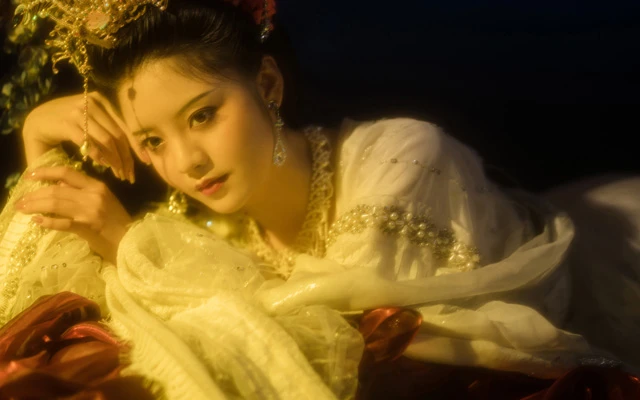From historical books and museums artifacts to ancient costume dramas, and being widely worn, the steps of hanfu entering the public eye are traceable. Hanfu culture is traditional, but has also become a trend. Nowadays, there are countless young people around the world who love hanfu culture, this is not a form of nostalgia or pilgrimage, but rather hanfu's enduring vitality is due to it being a living history, a living culture, and an enduring fashion.

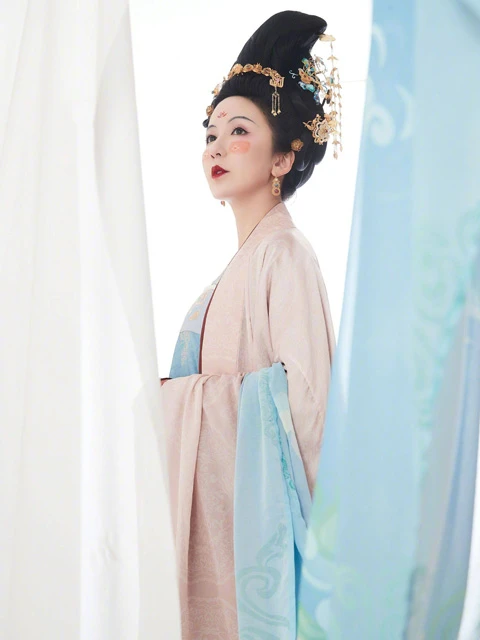
Despite this, Hanfu is still far from our daily lives for many of us. Some people are intimidated by the complex style and impracticality of Hanfu, while others are concerned with the rigorous and strict form of Hanfu, and are afraid to try it.
What are the requirements for wearing hanfu? What are the controversies about the form of hanfu? How far are we from the ultimate goal of everyone wearing hanfu? In the form of a Q&A, Harper's Bazaar and hanfu culture enthusiast and promoter Yu Zhu discuss how hanfu can enter the daily lives of every hanfu lover.
The Threshold of Wearing Hanfu
Yu Zhu first became aware of hanfu during her student days, from timid photo shoots in the early days, to later dressing up boldly, participating deeply, and gradually taking on various tasks of various interest groups, and now thoroughly incorporating it into her daily wear options, even boldly attempting to restore styles and mix modern designs, calling on fellow enthusiasts to promote Han-style life through their own actions. Yu Zhu pays attention to hanfu because of its beauty, and as a concrete carrier of traditional culture, hanfu carries not only the crystallization of Chinese aesthetics, but also more of the cultural depth and weight of China.
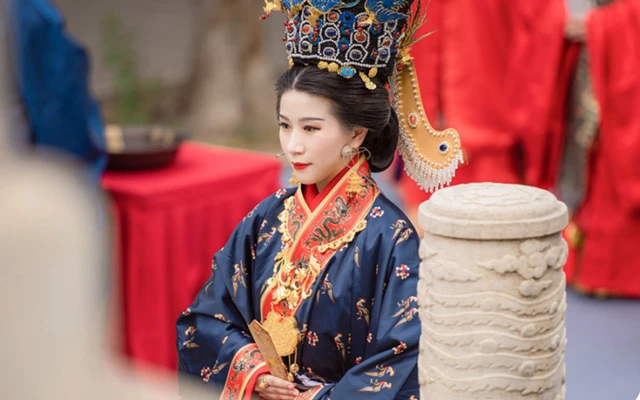
Yu Zhu
Hanfu culture has a long history and various forms. Could you introduce us to the different charms of hanfu?
The form of hanfu has changed over a long historical period. As a cultural carrier, hanfu carries and expresses the level of productivity and humanistic and geographical features of the specific era in which it is located.
For example, the clothing of the Qin and Han dynasties was limited by the level of craftsmanship, hence the simple colors; the Jin people were free and easy, so they wore loose clothing and broad belts; the Tang Dynasty was inclusive, hence the aesthetic was graceful; the Song Dynasty pursued a gentle temperament and elegant dress; and the Ming Dynasty was cold and strong, hence the clothing was thick and gorgeous. And these different specific stages of each dynasty have even more specific characteristics, which are difficult to describe in full.
When you explore Chinese historical culture, what role does hanfu play?
The enthusiasts of hanfu have an extensive reserve of traditional historical culture. They can easily recognize various items such as umbrellas, fish lamps, and Weimao, as well as traditional customs and etiquette for festivals.
Whether it be culture or history, it is too vast and profound. As hanfu enthusiasts, we only scratch the surface of it. Because of my love for hanfu, I strive to learn about customs, etiquette, and history related to it, so that my knowledge is not limited to the superficial aspect of wearing the clothes.
For instance, during the Dragon Boat Festival, we often mention the "Wu Du (五毒, five kinds of poisonous animals)". On this day, we may choose to wear clothing with patterns related to the Five Poisons.
When selecting Ming Dynasty hanfu, we also learn about the Ming Dynasty's system of granting clothes, and the historical significance of Bu Zi (补子). The Ming Dynasty's system of granting clothes used patterns of birds and animals on official attire to distinguish between different ranks and positions. The patterns of birds represented civil officials, who were considered cultured and rational, while the patterns of animals represented military officials, who were brave and fierce.
Simultaneously, when we wear hanfu, whether in artistic creations or daily life, it introduces traditional East Asian aesthetics to the public. The public's attention is drawn to this kind of clothing, which provides an opportunity for us to educate and promote understanding, so that more people can accept and appreciate it.
Have you encountered people with prejudices against hanfu, or who are deterred by thoughts such as "not daily" or "too complicated"? Do you think hanfu is a hobby with a threshold?
For example, when taking photos in places like the Palace Museum, people usually choose gorgeous palace styles to match the shooting environment. During the shooting process or on the way back from the event, they often encounter passersby who praise the beauty but do not consider trying it themselves. This is not because hanfu has a threshold, but because such gorgeous hanfu is obviously not convenient for daily life.
Regarding the threshold, I think it can be viewed from two aspects. On the one hand, I believe that wearing hanfu has no threshold in terms of social status or economic strength, anyone who likes it can try it. Nowadays, there are many affordable and daily hanfu styles. Many styles are far cheaper than some popular fashion styles, and the designs are also very daily and not abrupt in daily life.
But on the other hand, I think there is a threshold for the mentality and quality of wearing hanfu. The deeply understanding group can see it as a carrier of cultural confidence, while the general public who has just come into contact can regard it as a beautiful dress. However, we should avoid some paranoid self-identification and avoid using it in some improper occasions. I think this applies not only to hanfu, but to all aesthetically designed cultural artifacts that need to be respected.
The Dispute of Hanfu Form
The hanfu culture today not only includes restored hanfu, but also new hanfu designs that incorporate traditional Chinese elements and modern fashion designs. What do you think of this new style of hanfu?
Han-style fashion or modern hanfu designs cannot simply see this as the disappearance of form. Rather, we should recognize the trend of modernization and internationalization of hanfu elements. We should make use of the natural consumer tendency to pursue beauty and diversify the ways in which hanfu enters modern life, so that it can truly come alive in all social classes. The development of "Han-style fashion," "daily hanfu," and "restored hanfu" should complement each other, increasing social acceptance and recognition step by step.
In fact, there are often disputes in the hanfu circle, especially when restored hanfu and modified hanfu meet. What is your opinion on this? What does the form of hanfu mean for hanfu culture? How should we protect and develop hanfu?
These disputes can be seen as reasonable academic discussions. As a relatively new thing, it is understandable that there are many different opinions and ideas. Perhaps the development direction of hanfu will become clearer through these debates. Therefore, the form of restored or standard hanfu is the skeleton of hanfu, and once the framework is established, any design is reasonable as long as it is based on good quality and evidence.
As for Han-style fashion, there is no need for decisive restrictions. It is more of an expression of an idea. Rational cognition, exploration, diversified development, and practical action are my current understanding of the development of hanfu. As for protection, the best way to protect and promote clothing is to wear it.
We don't have to treat hanfu as a special type of clothing to discuss this issue. Instead, we can treat hanfu as a common consumer product, and we will find that everyone faces similar debates about difficult choices.
Expectations of Modern Hanfu Promotion
In recent years, the popularity of hanfu culture has been increasing. Events such as the Henan Spring Festival Gala and the Hua Fu Day have created a large platform for hanfu culture. In addition to online viewing, what other opportunities are there for us to experience hanfu culture in person?
There are traditional festival activities, community outreach events, and commercial performances to enjoy. Among them, the experience of hanfu photography is an important means of immersion. By experiencing the beauty of wearing hanfu firsthand, one can step through the door of traditional Chinese culture with a sense of satisfaction that cannot be replaced by simply observing from the sidelines.
In your opinion, what else is needed to promote hanfu culture overseas? Do you have any new expectations for the promotion of hanfu culture?
It is not enough to rely solely on overseas Chinese and international friends, we should work with domestic clubs and enthusiasts. If hanfu is to be marketed like fashion, it should focus on brand building and create a batch of products with international competitiveness.
Many hanfu enthusiasts have a sense of mission to promote hanfu culture. What is your ideal vision for the promotion of hanfu culture?
My ideal vision for the promotion of hanfu culture is to break down barriers and bring hanfu into everyday life. Hanfu can be a beautifully garment used for various formal events and ceremonies, but there should also be more practical and everyday styles that can be worn in social life. I hope that more people can understand how to wear hanfu in different settings.
One day, when people open their closets to choose their outfits, and consider hanfu as an equal option alongside modern fashion, and prioritize meeting their fashion needs rather than worrying about attracting attention or creating a sense of ceremony, that is when hanfu will truly be revived.
Let hanfu become an ordinary piece of clothing, is the mission of many people who have already contributed a lot of effort and enthusiasm. Hanfu should not be a niche hobby, and the weight of culture should not only exist in ancient books. Only be worn on this land can it continue to grow and flourish.
We hope that more people will hang hanfu in their closets instead of just watching it. They can wear it confidently and appreciate it, turning hanfu into a common item. When people start wearing hanfu for travel and everyday life, integrating it into daily life, culture is no longer a metaphysical symbol, it is life itself.
